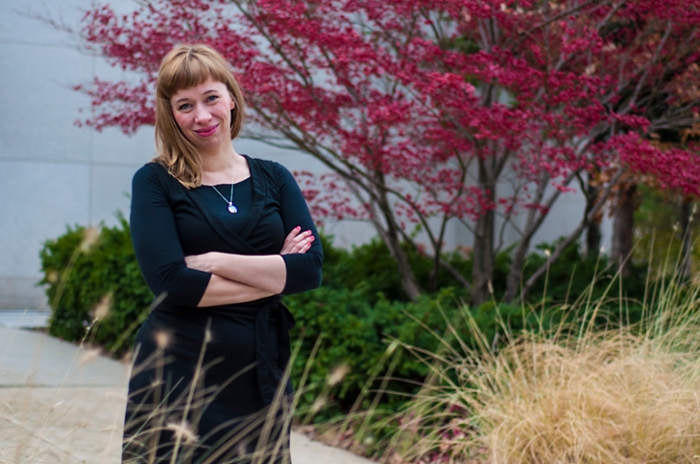Faculty Spotlight: Claudia Haase
IPR associate captures human development across the life span
Get all our news

Claudia Haase, developmental psychologist and IPR associate, studies how humans develop across their lives.
Growing up in East Germany, “We had no freedom of speech, no freedom of the press, we lived behind a wall,” recalled Claudia Haase, a developmental psychologist and IPR associate. “But there were some people who showed remarkable resilience in the face of this adversity.”
From this, Haase realized that “people can—even under the same circumstances—develop in very different ways.”
This realization set her on a path to research that eventually took her to the United States. Along the way, she has worked to understand why people develop the way they do, and how factors—from social to biological—affect humans across their lives.
The Bright Side of Aging
Aging is a natural part of human development, yet we tend to associate it with “decline and loss,” Haase explained. “While that’s certainly true of some aspects of human development, like our health, there are other aspects that actually improve with age.”
Haase’s research has uncovered “the bright side of aging” by identifying ways that our emotional and motivational functioning gets better as we get older.
Through multi-method lab experiments and large-scale surveys across more than 80 countries, she and her colleagues discovered that as adults age, they express more positive and fewer negative emotions toward their partner, they are more able to let go of unattainable goals and disengage from conflict, and they put more trust in others.
These positive changes can contribute to what researchers call the “well-being paradox” in late life. While the general perception is that we decline as we age, Haase’s findings paint a brighter picture.
“We need to make an effort to better understand late-life development because the world’s population is aging rapidly,” Haase said. “And that’s a huge shift in the challenges and opportunities our societies will be seeing."
Close Relationships, Happiness, and Health
Beyond aging, Haase also shows why understanding close relationships is key to understanding human development.
“People don’t live in a vacuum,” she said in discussing her work on what makes or breaks marriages. “Much of our development is shaped by the people around us.”
In one study, Haase and her colleagues observed married couples discussing an area of conflict for 15 minutes. The researchers then coded facial expressions, body language, voice, and language on a second-by-second basis, noting how spouses responded to conflict—from expressing anger to shutting down or “stonewalling.”
Connecting these emotional behaviors with longitudinal health data over a 20-year period, the researchers discovered that those who got angry during a marital spat were more likely to develop cardiovascular symptoms over the next two decades. On the other hand, those who shut down during the argument were more likely to develop bad backs, stiff muscles, or other musculoskeletal problems.
“There’s enormous variation in how people connect with others,” Haase said.
Understanding this variation is important, she explained, since whether or not people are happy in their marriages has “important consequences”—not only for their own happiness and health, but for their children and even society as a whole.
Biological Foundations of Development
Whether looking at aging or marital conflict, Haase’s research captures differences in how people develop socially and emotionally. Yet the question remains: “Why are people so different? Why are some of us hot-headed while others remain cool and collected?"
Approaching this question from a biological perspective, Haase and her colleagues have examined different genes that regulate neurotransmitters involved in socioemotional functioning, such as serotonin and dopamine.
In a series of studies, they have identified a specific genetic variant in a serotonin-related gene that makes individuals more sensitive to their environments and amplifies both positive and negative emotions.
“These people are like hothouse flowers, blossoming in supportive environments but withering in harsh conditions,” Haase said. “People with other variants of this gene are less emotionally reactive.”
Together with her colleagues, Haase also studies how specific regions of the brain are linked to emotional differences. In one study, the team looked at patients with neurodegenerative diseases, such as Alzheimer’s, and showed that a shrinking of the brain’s insula dulls the disgust response. Other studies look at Alzheimer’s disease biomarkers and how cognitive and physical activity can maintain brain health in late life.
Yet Haase stresses that biology isn’t everything. “Putting biology, social environments, and individual choices together gives us a more complete picture of development.”
With each study she conducts, Haase is hoping to better understand some of the mysteries of life-span development. And with each new finding, she comes closer to answering the question that came to her growing up in East Germany: “Why do we develop the way we do?”
Claudia Haase is assistant professor of human development and social policy and of psychology, and an IPR associate.
Published: January 27, 2017.